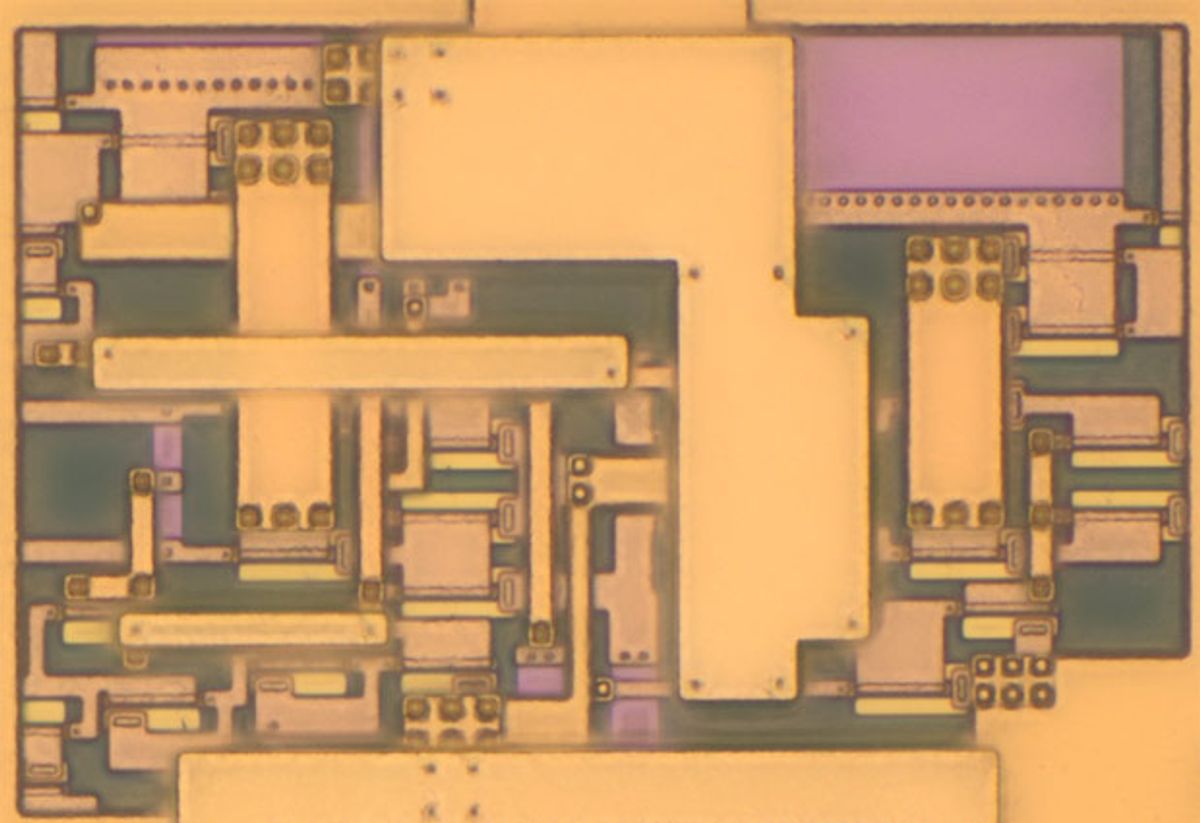4K (or ultra high definition) television technology requires high-speed TV cameras that produce data streams of 12 to 20 gigabytes per second. Such data rates can only be transmitted from the cameras by optical fiber links. In live reporting of sporting events such as soccer games—often requiring slow motion instant replay—these optical cables have to be dug in under the grass, severely limiting the mobility of the cameramen. Up to now, there have been no wireless links capable of handling these torrents of data.
A new advance may change this. Researchers from Chalmers University of Technology in Göteborg, Sweden, and from Ericsson Research, also in Göteborg, announced in late October at the Compound Semiconductor Integrated Circuits Symposium in San Diego that they have built wireless transmitter and receiver chips that achieved a transmission rate of 40 gigabits per second. That’s twice as fast as the previous record, which was reported in 2012 by Hiroyuki Takahashi and colleagues from Osaka University, Toyonaka, in Japan. The Göteborg researchers demonstrated a wireless link operating in the D-band, the 110- to 170-GHz frequency range, and using a bandwidth of 40 GHz. In the laboratory experiment, the transmitter and receiver were linked by a two meter dielectric waveguide, but the researchers expect that in an outdoor point-to-point experiment they will be able to bridge one kilometer.
The D band is still very much the frontier of the radio spectrum. This huge frequency band, which would accommodate 6 million 10-kilohertz-wide AM broadcast channels, is largely unused—mainly because developing circuits that would amplify these high frequencies has heretofore proved to be very difficult.
The Swedish researches turned to state of the art double heterojunction bipolar transistors (DHBT) made of indium phosphide for building their transmitter and receiver chips. Over the last 10 years, these transistors’ maximum oscillation frequency has increased, and now DHBTs with a cut-off frequency of 650 GHz have become available. This has made the transistor usable for amplification up to over 300 GHz, explains Herbert Zirath, the professor of high-speed electronics at Chalmers University who led the research. “We recently built a receiver, including antenna, that works up to 340 GHz,” says Zirath.
The transmitter and receiver chips are tiny, with footprints slightly over a square millimeter. To create them, the researchers collaborated with Teledyne Scientific & Imaging in Thousand Oaks, California, a company specializing in high-speed electronics. “We have a close cooperation with that company,” says Zirath. “Here at Chalmers, we design the circuits, we make the mask layout, and they fabricate the circuits. Then we get them back and test them.” It took Zirath’s team four years to develop the chipset.
The circuits operate at a very wide bandwidth, which is required for achieving the requisite data transmission rates. “This is what is pretty unique of this chipset. I haven't seen any similar bandwidth designs,” says Zirath. “We had quite a few design rounds—‘tape outs’ as we say, four of them—so we have built up gradually the competence to make wideband circuits that can cover a whole radio band like the D-band," says Zirath.
Whether the world’s frequency assignment authorities will allow such a wide bandwidth for communication is still an open question. “We have shown that there is a possibility that you can use it. When there is much interest, this might eventually become possible,” says Zirath
They first tested their designs on individual circuits. “Once we had the individual circuits working properly, we designed the chips, putting the designs on one chip. This is pretty scalable, so we can continue this integration now with more components.”
The transmitter was fed with data from an external radiofrequency source supplying a signal of 36 to 57 GHz. The frequency was tripled with a multiplier on the chip, which subsequently fed an output frequency of 110 to 170 GHz into a three-stage amplifier. The transmitted signal has a power of a few hundred milliwatts.
As the team conducts outdoor experiments, it plans to improve the transmission rate even further. “The project is aiming to reach 100 gigabits per second with one chipset and one carrier,” Zirath says.



